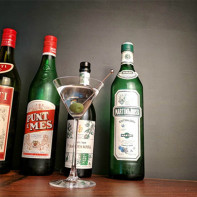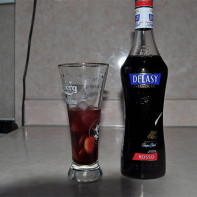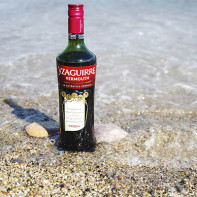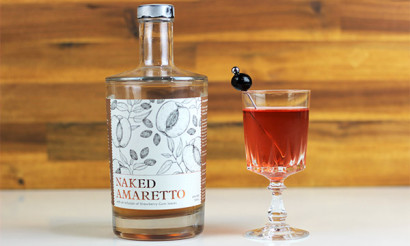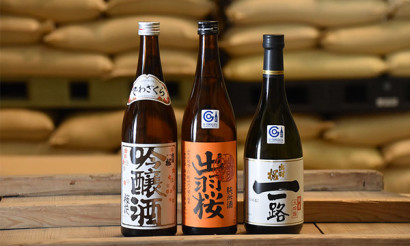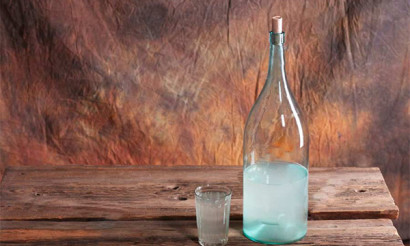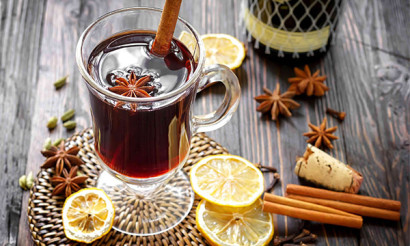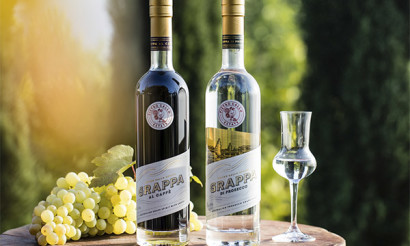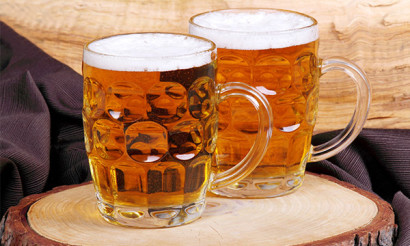How to drink vermouth correctly
Vermouth is a legendary original alcoholic drink, which has long ago gained popularity in social circles. Almost at every party it is in great demand as a pure drink and a part of different cocktails. It is added to desserts and main courses, and is also used as a preventive medicinal tincture. And thanks to the variety of species with unique and unique spicy shades you can always choose vermouth for every taste.
- What is vermouth
- Types
- Composition and calories
- How to drink Vermouth
- What glass to drink from
- What to drink with
- What to spice it with
- Can we drink pure vermouth
- What is better vermouth
- Cocktails with vermouth: recipes
- "Note B.
- "Green Life
- "Wembley
- "Galileo.
- "Mary VS Willie."
- Cooking Uses
- Recipes for dishes with vermouth
- Carrot puree soup with vermouth
- Risotto with shrimp and vermouth
- Seafood pasta in cream sauce with vermouth
- Vermouth production process
- How to make vermouth at home
- Homemade white vermouth
- Homemade red vermouth
- Health and harm of vermouth
- Wine for every taste
- Interesting facts
What is vermouth
The drink got its name from the memorable taste of the ingredient of the same name - "wermut" (bitter wormwood). In addition to this plant, producers use an extensive mixture of various spicy herbs to obtain unique flavor characteristics. The specific composition of any vermouth is almost never fully prescribed on the label, as it is considered to be a special secret recipe.
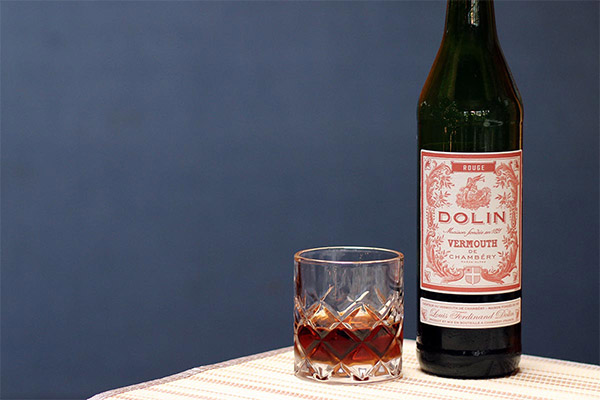
Initially only 2 types were commonly known: sweet Italian and dry French. Today this drink is classified into several common types: extra dry, rosé, sweet and others.
Vermouth contains about 75% of wine. Most often manufacturers use white varieties of grapes, so that after opening the bottle the contents immediately began to react with oxygen for the full disclosure of flavor and aroma and was ready for consumption. Whereas red grape vermouths must be uncorked in advance before the drink is served.
Products with the highest volume of ethyl alcohol have the longest shelf life. They can be stored in a dark and cool place, with the lid on, for up to 6 months. In this case, the spicy drink practically does not lose its special flavor properties.
To make vermouth use neutral wines with a simple and clear style. It is such a wine that will be a good basis for a spicy filling. Herbs, spices, flowers and other ingredients act as a bright and rich addition.
Types of
According to the world classification, there are 5 groups of vermouth:
- Secco - dry vermouth, with a minimum possible sugar content of up to 4%. Strong drink has herbal and light citrus flavors. Originally produced in France on the basis of local wines. The drink has a light transparent color and light structure. The secret of a true tart French vermouth lies in the competent combination of white wine and a variety of herbs.
- Bianco is white vermouth with 10-15% sugar content. It has a characteristic bitter flavor and a light spicy hint with citrus notes.
- Rosso - red sweet vermouth with more than 15% sugar content. That's why the drink has a dense structure and rich aroma. In taste it is possible to notice the berry tones: cherry and raspberry. Originally it was made in Italy on the base of basic wines, local herbs and spices.
- Bitter is the bitterest and strongest vermouth, which belongs to the class of bitters, medicinal infusions. It is consumed after a meal to improve digestion.
- Rose - rose vermouth, the sugar content varies from 10 to 20%, depending on the producer. The drink is used as an aperitif to stimulate the appetite. Rose vermouth is excellent for cocktails, best opened in combination with ice.
Composition and calories
The first recipes date back to ancient times. At that time, the composition of the drink was quite simple and included only wine and alcohol. Spices were actively added in Italy in order to improve the taste characteristics of failed wines.
Dry varieties are made exclusively on the basis of white wines, so the drink has a transparent light color and a specific bitterness in flavor. Sweet varieties can be made with white or red wine. Sweet white vermouth has a denser taste and weakly pronounced bitterness. Sweet red drink is characterized by a rich and bright color, flavor and aroma.
Modern vermouth, besides wine and alcohol, contains a great variety of herbal ingredients, thanks to which it is possible to create a unique flavor shades. Most often the recipe of famous drinks contains herbs and spices, peculiar to a particular territorial region.
In the production of vermouth, in addition to the high proportion of wormwood, other herbal ingredients are also involved:
- cardamom;
- mint;
- cinnamon;
- ginger;
- coriander;
- St. John's wort;
- cloves;
- nutmeg;
- elderberry;
- yarrow.
This is only a small fraction of the common additives of the spicy drink. Each manufacturer creates its own unique recipe, which is kept in the strictest secrecy. For this reason, the label will never indicate the full composition of the product.
The caloric content differs depending on the type of drink. Obviously, the richest and sweetest vermouths have more calories than the lightest dry versions. Thus, the caloric value per 100 ml of the product will vary from 80 to 160 kcal.
How to drink vermouth correctly
Vermouth is an original and refined alcoholic beverage, which should be felt. That is why it is accepted to be consumed as an aperitif before dinner, to fully experience all the nuances of the drink. Also, "wormwood wine" is popular at parties, when you can languidly savor the spicy taste of wormwood.

The drink is consumed alone or as part of cocktails. More often it depends on the type of vermouth. Gentle and light drinks open up better in combination with ice and lemon. Dense and full-bodied types are rather heavy on their own, so they are used for cocktails. Vermouth is perfectly combined with different kinds of alcohol, juices and fruits. That is why there are a lot of famous cocktails based on it.
What glass to drink from
Vermouth is usually consumed chilled, so the glasses should be appropriate. The pure spirit is served in a triangular-shaped goblet on a thin high stalk. When serving it classically, an olive is dipped into the glass, and a skewer is put beside it to make it aesthetically pleasing to the palate. The "triangular shot glass" is also used to serve cocktails.
Another suitable type of glassware for vermouth are low tumblers with a thick bottom. The drink belongs to the "all day drink" category, which means drinking it in small sips over a long period of time. Vermouths have a large palette of flavors that must be tasted.
It is unacceptable and considered a mauvais ton.
What to drink with
Connoisseurs of vermouth say that it reveals its unique flavor and aroma best when it is combined with ice or a few drops of water. This combination allows us to catch the most subtle nuances of the drink.
Sweet varieties go well with strong alcoholic beverages - vodka, cognac or gin. In any of the above cases, it is appropriate to add a slice of lemon or orange to add freshness to the drink.
A lighter serving is vermouth combined with soda and various freshly squeezed juices.
What is served as an hors d'oeuvre
When vermouth is served as an aperitif, salted nuts, olives, pineapple, citrus and strawberries are good appetizers. A heartier appetizer could be canapés, cheese or meat platter.
Vermouth is also served as a digestif after the main course. In this case, any fruits, berries and desserts are appropriate.
To drink vermouth with food, it is necessary to prepare a suitable menu in advance. White vermouth is better served with fish dishes and seafood, pink vermouth is perfect for light salads and appetizers with poultry. Red rich vermouth is in harmony with meat gourmet dishes.
Can vermouth be drunk pure
For drinking pure vermouth is best suited to dry vermouth. Their light and simple structure reveals itself even without ice. For a fuller exploration of flavours it is advised to serve chilled to 8-12°C.
Which vermouth is better
It is impossible to give a definite answer to this question, because everything depends on the individual taste preferences of a person. However, there are a few tips that will help you choose the most appropriate type of drink:
- For acquaintance with vermouth it is better to choose not too sweet and not too dry versions. The optimal amount of sugar in the drink will let the taster understand the specifics of the drink. Bianco or Rosso is a great solution to get the first impressions of alcohol.
- Sweet tooth will like the sweet vermouth. According to statistics, the majority of ladies prefer these types of alcoholic beverages. Exactly for them the sweet types of vermouth will be a real alcoholic dessert.
- Connoisseurs of dry wine should look at the variants Secco, Dry or even Extra Dry. These drinks have a high alcohol content and a minimum amount of sugar. The tart light taste will be appreciated by the lovers of strong drinks.
- Bitters should be bought only as an original and very valuable alcoholic gift for a great connoisseur of this category of beverage.
Cocktails with vermouth: recipes
In the cocktail world, vermouth is the most successful alcoholic component of many common mixes. More than 400 different cocktails can be made on the basis of this spicy, specific drink.
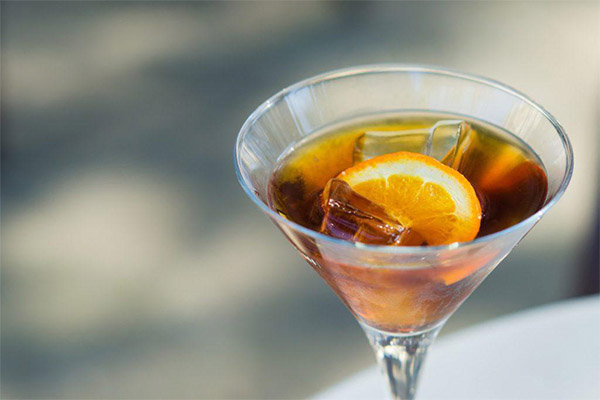
"Note B."
For the preparation you will need:
- vermouth - 50 ml;
- whiskey - 30 ml;
- sherry - 20 ml;
- ice.
Fill the mixing glass with ice, add the rest of the ingredients in turn and stir. Using a strainer, pour the resulting drink into a cocktail glass.
"Green Life".
For preparation you will need:
- vermouth - 50 ml;
- 30 ml;
- fruit liqueur - 10 ml;
- berry syrup - 15 ml;
- egg white - 1 pc;
- cumin;
- ice.
Fill a mixing glass with ice, add the remaining ingredients of the cocktail. Shake vigorously, then pour the ready cocktail into a pre-cooled tumbler. When serving, sprinkle cumin on top.
"Wembley."
For the preparation:
- cherry vermouth - 50 ml;
- pineapple juice - 30 ml.
- whiskey - 15 ml;
- ice;
- Pineapple slice for decoration.
Pour ice into the shaker and add the rest of the ingredients. Stir vigorously. Strain into cocktail glass. Decoration with pineapple slice.
"Galileo"
For the preparation we will need:
- red vermouth - 50 ml;
- silver tequila - 15 ml;
- Triple Sec Liqueur - 15 ml;
- Campari bitter - 15 ml;
- lemon slice - 1 pc;
- ice.
Fill a shaker with ice, add the rest of the ingredients and mix thoroughly. Pour the obtained drink into a roux and decorate with a slice of lemon.
"Mary VS Willie".
For the preparation you will need:
- red vermouth - 30 ml;
- cognac - 15 ml;
- Grappa - 15 ml;
- olives - 3 pcs;
- ice.
Fill a mixing glass with ice and pour in grappa and cognac. Stir. Whisk the drink into a tumbler. When serving, we add 3 olives to the cocktail.
Directions for Cooking
Some desserts and main courses cannot be made without alcoholic beverages. Liqueurs and cognacs are often used for baking. As part of the crispy batter there is vodka. And for fish and meat dishes vermouth is best suited.
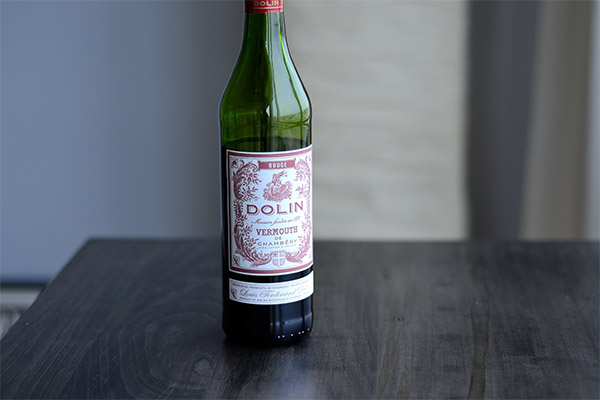
- The most delicious marinades for oceanic fish and seafood are prepared on the basis of vermouth. The combination of white vermouth with brown sugar, spices, lemon and olive oil gives the fish a unique spicy and rich taste.
- Under the influence of vermouth-based marinade any game softens, gains fruity and spicy shades of flavor.
- Vermouth is also used for cooking sauces for different salads, soups and hot dishes with game, poultry, fish and seafood.
- In preparation of desserts the drink is used for impregnation of sponge cakes, stuffing of fruit and berry pies, creams.
- And of course, vermouth is a popular component of many famous cocktails.
Recipes for dishes with vermouth
Spicy dishes with a spicy touch of vermouth will diversify the usual diet, as well as become a bright decoration of the festive menu.
Carrot puree soup with vermouth
The volume of ready-made puree soup is calculated for 4 servings.
To prepare it, you will need:
- broth or water - 1 l;
- fresh carrots - 1 kg;
- onion - 1 pc;
- olive oil - 3 tablespoons;
- garlic - 1 clove;
- dry vermouth - 2 tbsp;
- cream - to taste;
- Spices and salt - to taste.
Cooking time - 30 minutes.
Caloric value - 360 kcal.
For this dish the following spices will work best: coriander, cumin, nutmeg, coriander and a mixture of peppers.
Step by step cooking:
- Heat a frying pan with olive oil. Fry finely chopped onion, garlic, add spices. We cook within 10 minutes, constantly stirring.
- We pour vermouth into the frying pan and cook until it evaporates.
- Grate carrots on a coarse grater, put them in the roast and mix everything thoroughly.
- Add salt and pepper to taste, stir again.
- Pour broth into a saucepan and bring it to the boil.
- Transfer the roast from the frying pan to the pot with the broth and cook over low heat for 25 minutes.
- With the cooked soup we give time to cool slightly. After that, grind it with a blender until smooth.
- For a softer flavor in the cream soup add cream and stir. The dish is ready.
- Before serving, garnish a portion of the cream-soup with coriander leaves and flax seeds.
Risotto with shrimp and vermouth
Ready dish is designed for 4 servings.
For the preparation you will need:
- round rice - 200 g;
- Boiled shrimps - 200 gr;
- Onions - 1/4 of a head;
- fish broth or water - 1 l;
- dry vermouth - 30 ml;
- olive oil - 25 ml;
- parsley;
- salt and pepper - to taste.
Cooking time - 25 minutes.
Caloric value of the dish - 370 kcal.
Step by step cooking:
- Heat a frying pan, pour some of the olive oil. Fry finely chopped onion until golden.
- Add rice to the pan and fry for 3 minutes, stirring constantly.
- Pour in the vermouth, add your favorite spices and cook until the vermouth evaporates.
- Add fish broth or water in batches as it evaporates.
- Add boiled shrimp and cook for another 5 minutes. The dish is ready.
- Before serving, sprinkle risotto with chopped fresh herbs.
Seafood pasta in cream sauce with vermouth
Amount of ingredients is calculated for 4 servings.
For cooking you will need:
- any kind of pasta - 250 g;
- Boiled seafood (mussels, squids, octopus) - 250g;
- cream (30% fat content) - 180 ml
- olive oil - 2 tbsp;
- garlic - 1 clove;
- dry vermouth - 100 ml;
- Salt and spices - to taste.
Cooking time - 20 minutes.
Caloric value of this dish - 680 kcal.
Spices suitable for this dish: oregano, basil, mix of peppers, nutmeg, coriander.
Step by step cooking:
- Boil the pasta according to the recommendations on the package.
- At the same time we begin to prepare the roast. Heat a pan with olive oil, add crushed garlic, salt and spices to make the oil spicy and fragrant.
- Fry the seafood until golden brown.
- Pour in vermouth and stir quickly.
- Add cream and cook over low heat for about 2 minutes.
- Combine cooked pasta with roast and stir. Dish is ready.
- Serve the pasta as soon as it is ready. When serving, garnish with herbs and toasted seafood.
The process of vermouth production
During all the time of its existence the basic processes of vermouth making practically haven't been changed. The basis of the drink is still fortified wine, which is flavored with wormwood and other desired herbs or spices. But the exact proportions of all ingredients are kept strictly secret. After all, these data determine the specific and original bouquet of a particular producer.
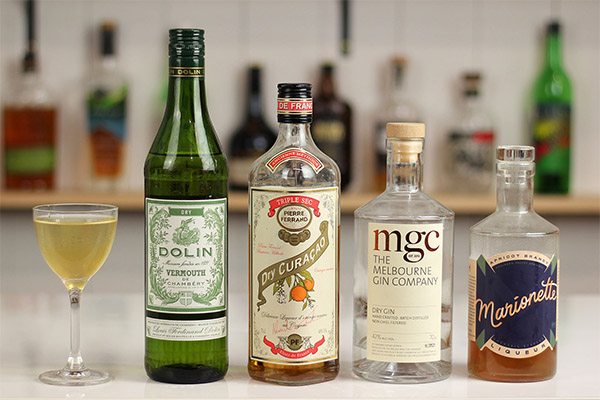
Initially vermouth was made on the basis of white wines. Today white and red varieties are used for the production of wine material, the future base of the spicy drink.
Wine base is about 80% of the volume of the final product. The rest is made up of plant material and alcohol. To make sweet and dense types of the drink, a sugar syrup is also added.
Sugar reduces the bitterness and also helps the aromatic substances to penetrate better into the structure of the drink. The addition of alcohol is necessary to improve the solubility of all components in the liquid and preservation of the finished product. Herbs are cleaned, dried and ground for further infusion in a wine-alcohol solution. Tincture is prepared within 2-3 weeks. After that all the ingredients are mixed, the resulting drink is processed at a reduced temperature, filtered and left to "rest" the mixture. The complete process of making vermouth varies from a few months to a year. Before bottling, the finished product is pasteurized to improve the flavor of the wine and keep it pristine for the consumer.
The skilful combination of botanical ingredients in vermouth makes it possible to create products with different flavors and aromas:
- Wormwood and oakberry impart bitterness.
- Coriander, elderberry and lemon peel develop muscat tones in the vermouth.
- Rosemary, St. John's wort and juniper add notes of resin.
- Catnip and molasses infuse the palate with fresh citrus tones.
- Chamomile and cloves combine and reconcile all of the aforementioned completely different flavors into a coherent bouquet.
- Cardamom and vanilla maintain the balance of the components.
Dry vermouths have a lighter and thinner structure, so their aromatic content is low. The balance of subtle flavor and aroma with a specific bitterness is not appreciated by everyone. As a rule, Extra Dry is chosen only by true connoisseurs.
Sweet vermouth has a dense and thick structure, so it is abundantly complemented by a variety of components to balance the overall bouquet. The sweet drink is not usually consumed in its pure form. For this purpose it is too heavy. But in cocktails, a rich sweet vermouth transforms the taste and aroma of the other ingredients.
How to make vermouth at home
At home, you can try your hand at creating a unique secret recipe for vermouth. You can include only your favorite herbs and spices to bring your perfect drink to life.
Homemade white vermouth
To make it, you will need:
- white dry wine - 0,7 l;
- Vodka - 0.2 l;
- powdered sugar - 200 g;
- water - 4 tbsp;
- wormwood - 3 g;
- Other herbal additives - to taste.
As herbal additives you can use spices, which can be found in every grocery store. These are cinnamon, cardamom, mint, rosemary, nutmeg. It is important that the aroma of spices does not interfere with the main taste of the drink.
Method of preparation:
- All plant components, including wormwood, pour vodka and insist.
- Make caramel out of powdered sugar and water. We mix them in a saucepan, heat over low heat, stirring all the time. When the sugar mixture acquires a characteristic amber hue, take the pan off the heat.
- When it has cooled down, break the caramel into small pieces and pour 1 glass of wine. Heat on low heat, stirring constantly until completely dissolved. Let the syrup cool at room temperature.
- Mix the rest of the wine, the syrup and the strained tincture. The homemade vermouth is ready.
The drink is best stored in a dark, cool place.
Homemade red vermouth
For the preparation you will need:
- cranberry or blueberry wine - 0,7 l;
- Vodka - 0,2 l;
- honey - 3 tbsp;
- Wormwood and other herbs - to taste.
Fruit and red wines make a rich drink. Accordingly, spices and herbs for such vermouth should be bright and rich: yarrow, cinnamon, mint, saffron, cardamom.
Preparation method:
- Pour all the herbs with vodka and insist.
- Pour a glass of wine in a saucepan and add honey. We heat over low heat and stir until dissolved. Let it cool down to room temperature.
- Stir in the remaining wine, the honey syrup and the strained infusion. The vermouth is ready.
For the preparation you can also use different fruits and berries to get a richer, brighter and more flavorful drink.
The benefits and harms of vermouth
The healing properties of vermouth were noted in ancient times. At first, the alcoholic beverage was used as an antiseptic. Then, with its widespread distribution in Europe, vermouth was ascribed medicinal and even magical properties. This was due to the extensive composition of medicinal herbal ingredients. With the development of chemistry as a science the beneficial properties of vermouth were proved. They found in the drink essential oils, organic acids, vitamins B, C, P and many important for the body trace elements: magnesium, calcium, copper, iron, manganese and phosphorus. It began to be prescribed as a remedy for nervous tension.
Now we know vermouth as a pleasant aperitif that can improve digestion, and raise the mood. Regular consumption in small quantities has a restorative and tonic effect.
In colds, the drink is used to relieve coughs. Vermouth and honey are heated until completely dissolved. Then cool down naturally. The resulting syrup is taken 2 tbsp. three times a day. Honey combined with herbs gives the body the necessary micronutrients, and the alcohol component has a warming effect.
Vermouth is not recommended to use:
- children under 16 years of age;
- pregnant and lactating women;
- People with chronic diseases;
- People prone to allergic reactions to the components of the drink;
- People with alcohol addiction.
Excessive consumption of vermouth, as well as other alcoholic beverages, can lead to serious diseases, so it is always important to observe the norm.
Wine for every taste
The popular alcoholic beverage has been widespread since the Middle Ages. Since then, vermouth, firmly established in each country, has acquired its own distinctive features of production and use.
French vermouth is made on the basis of white dry aged wine to give the drink sherry and liqueur tones.
In the U.S., all possible types of vermouth are produced. Sweet California vermouth is made from sweet wine in order to get nutmeg tones in the final taste of the product.
French and South American vermouth have an excessively bitter taste due to the high quinine content. Therefore, such a drink is always diluted with soda or freshly squeezed juices.
In Germany and the Czech Republic, most vermouth is made on the basis of fruit and berry wine.
Interesting Facts

- Vermouth is called "wormwood wine" because of the essential ingredient of each recipe - wormwood.
- In the antiquity, the wine was flavored with resin. That all changed with the development of trade, when merchants began carrying saturated spices and spices.
- The authorship of vermouth is attributed to Hippocrates. According to legend, the idea of a spicy fortified wine came to Hippocrates while he was walking through the winery. The aromas of blooming herbs and ripening vineyards gave birth to the idea of a vermouth recipe close to the modern kind of drink.
- The homeland of the spicy drink is considered Italy, which is justified by the presence of nutmeg vineyards and an abundance of all kinds of spices.
- Classic vermouth is produced in France and Italy. And the typical French vermouth is made from white dry wine and has a slightly tart taste. Whereas vermouth from sunny Italy is famous for its muscat sweetness and rich spicy flavor.
- In the Middle Ages vermouth was considered a treat for ailments. Rich herbal composition referred to the drink's medicinal properties. That is why the aristocracy was fond of this aperitif.
- Italy is the undoubted world leader in the production of vermouth. The most famous producers have been supporting their image with high quality and unique flavor of the product for several decades. These brands of vermouth are so widespread that you can see their product in almost every bar.
- Besides Italy and France, many other countries can boast the quality and original product. They include Germany, USA, Holland, Bulgaria, Russia, Moldova and others.
«Important: All the information on the site is provided solely for introductory purposes only. Before applying any recommendations, you should consult with a specialized specialist. Neither the editors nor the authors shall be liable for any possible harm caused by materials."

